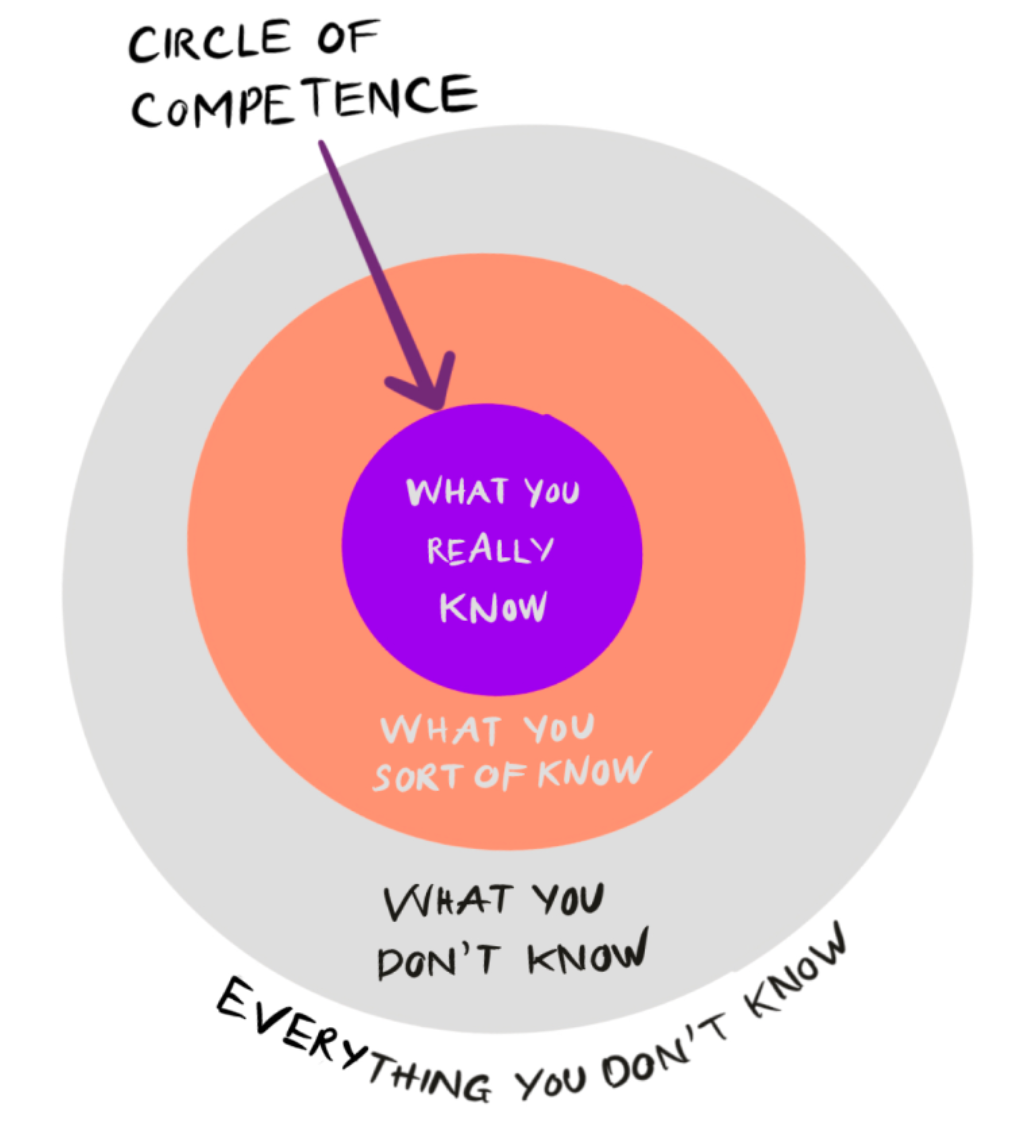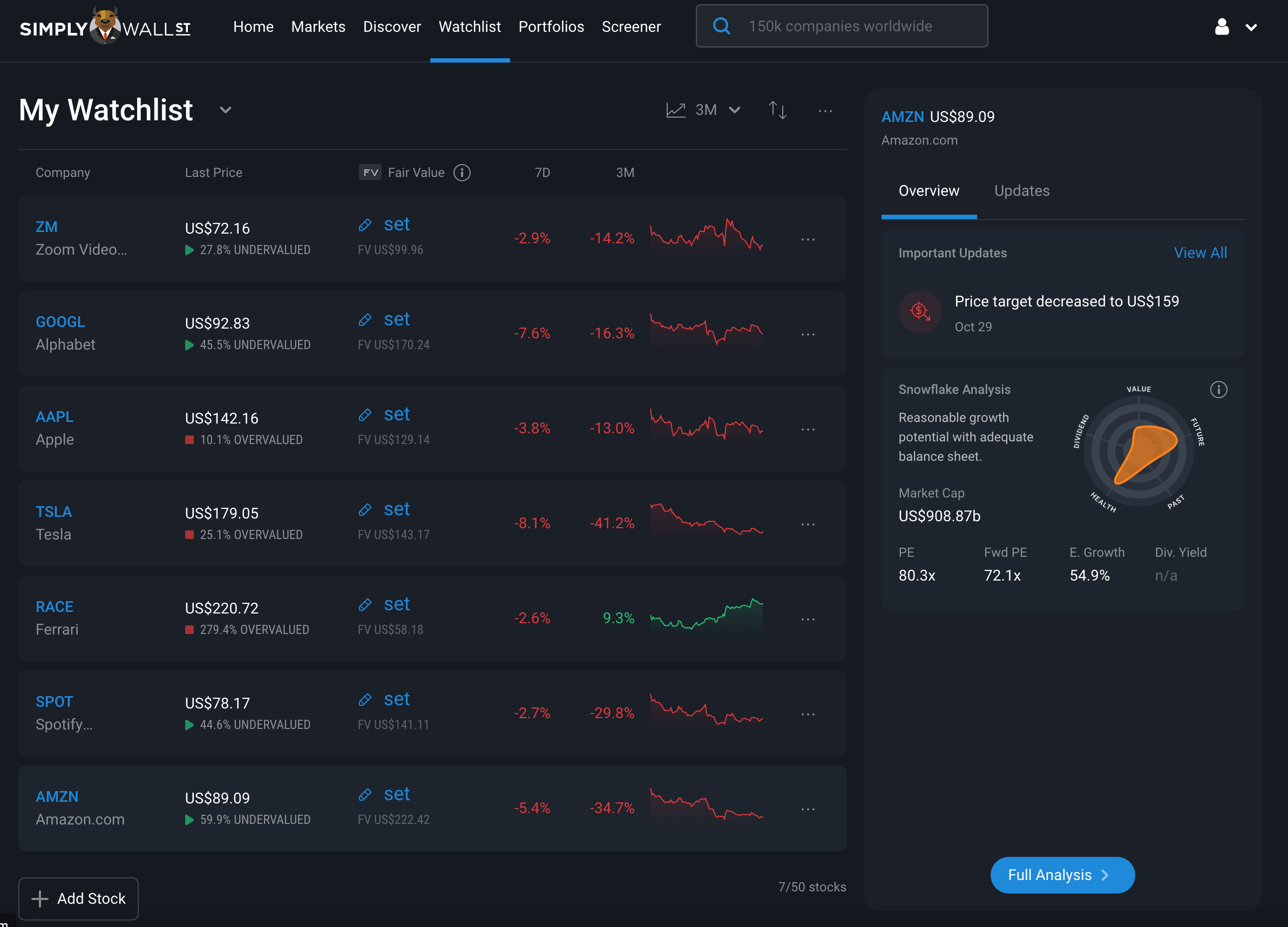Narrative based investing is essentially a systematized, repeatable, method to investing in any environment.
The process is as follows:
The “narrative” is essentially your assessment of the current business, and your estimates of where it could be in the future. Answering a question like “Where do I think this business is going to be in 5-10 years time, and why?” is the basic premise of a narrative.
A very brief example of a narrative is:
Based on my research, I believe stock X is going to have 40% market share of the $100bn Y industry by 2032 (i.e $40bn revenue). I believe it will be above its competitors because its current competitive advantage of “Z” will help it maintain its dominance in the future. With this in mind and other assumptions, I think the business could be worth $Xbn in 2032, and since it’s currently priced at half that value, I think it’s undervalued based on its future prospects.”
The entire Simply Wall St platform is built around this process, and throughout this series we’ll show you how it helps you build your narrative.
Now, an important point is, you can only build a narrative around a stock by getting to know the ins and outs of the underlying business.
So, how can you find businesses that you already know a lot about? Start by looking within your circle of competence.
Your “circle of competence” is any product or service that you have an in-depth understanding of. Think about products or services you already use, and ones where you know what makes them better than others.
There are many reasons to only look for investments within your circle of competence (like Buffett does), and here are three:

So in your own time, fill out this table below to get an idea of where you have some experience already.
What do I spend my money on?
What am I passionate about?
What is my line of work?
Now that you’ve answered the questions above, it’s time to list what companies are the owners of those products and services you use or know?
What do I spend my money on?
What am I passionate about?
What is my line of work?
Once you know which companies you use above that are also publicly listed as stocks on the stock market, you can then add them to your Simply Wall St Watchlist!

Now that you have a bunch of stocks on our radar that you’re familiar with, let’s get to know them a little better in Part 2!
In Part 2: Get to know the business, you'll find out exactly where to look to get up to speed on these businesses in your watchlist!